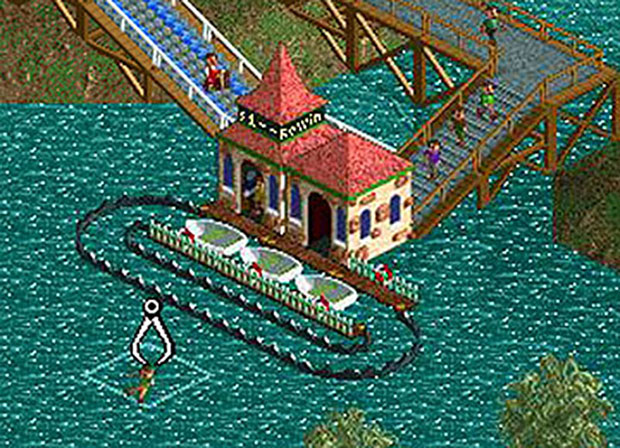
My girls got RollerCoaster Tycoon 2 this past Christmas. It’s a great little simulation game where they get to create and run their own amusement park, but there’s more to it than just building rides. By playing the game, they are learning the basic tenets of business management and coming to understand the delicate balance that is required to run a successful business.
For instance, they get to set the price of admission to the amusement parks they build. If they charge too much, nobody comes; if they charge too little, they don’t have enough money for maintenance and expansion. They have to hire handymen to empty the trash, maintain the lawns, and keep the paths puke-free (I kid you not). They have to hire mechanics to keep the rides running. And they can even hire a guy in a large panda costume to walk around the park and entertain the people who are standing in line.
But if they don’t hire enough handymen, the park gets gross and people leave. If they don’t hire enough mechanics, the rides break down and people leave. And if they don’t hire the guy in a large panda costume, people get bored standing in long lines and leave.
And in the user manual it really emphasizes the importance of good customer relations:
Caring for Customers
The satisfaction of your park guests is probably your most vital concern. Happy visitors stay in the park, spend more money, and (through reputation and word of mouth) draw other guests to your site. Unhappy guests leave with cash in hand.
How do you know what your visitors are thinking and feeling? As manager, you have access to powerful polling and reporting tools that let you monitor the thoughts and actions of every guest in your park.
The other day, I walked into the office and Emma was engrossed in one of her amusement park creations.
“Hey, Emma, whatcha doing?”
“I’m just making sure everyone in my park is happy.”
That’s my girl. In many ways this type of game was tailor-made for Emma. In any activity, she always makes sure that everyone is feeling included and having a good time. She’s caring, conscientious, attentive to other people’s needs. She is my little Customer Service Representative.
And as I watched, my little Customer Service Representative used the Guest Summary Window to gauge the happiness level of all of the guests in her park. She then used the Mini-Map to zoom in on a particularly disgruntled fellow standing in line for one of the roller coasters.
She clicked on the Grab tool, picked up the unhappy patron up by the scruff of the neck, and carried him over to the small lake that housed the rowboat rentals.

Then, without the slightest pause, she let go. The dissatisfied customer landed in the water with a splash, bobbed on the surface for a few seconds, and then went under.

She then went back to the Guest Summary Window and started scanning the crowds again.
“Wha…what in the world are you doing, Emma?”
“I’m getting rid of all the people who are complaining.”
“But,” I sputtered, “I think the idea behind the game is that you’re supposed to find out why they’re complaining and then solve their problems.”
“Oh, I know why they’re complaining,” she replied.
“Why are they complaining?”
“They’re complaining because there are no bathrooms.”
“Then why don’t you build some bathrooms?”
“Well, I had some bathrooms, but I had to demolish them to make some room for a new ride.”
“Then why don’t you build more bathrooms?”
“I can’t. I used up the last of my money to build the ride.”
And so I watched as my little Customer Service Assassin made her way systematically through the park, looking for anyone else who had the gall to be displeased by the lack of facilities. And after the summary execution of about a half-dozen more urine-engorged malcontents, there wasn’t a single dissatisfied customer in the park.
I had to hand it to her. With a clear mandate to keep her customers happy, but without the budgetary resources necessary to meet their needs, she’d found another way to achieve 100% customer satisfaction.